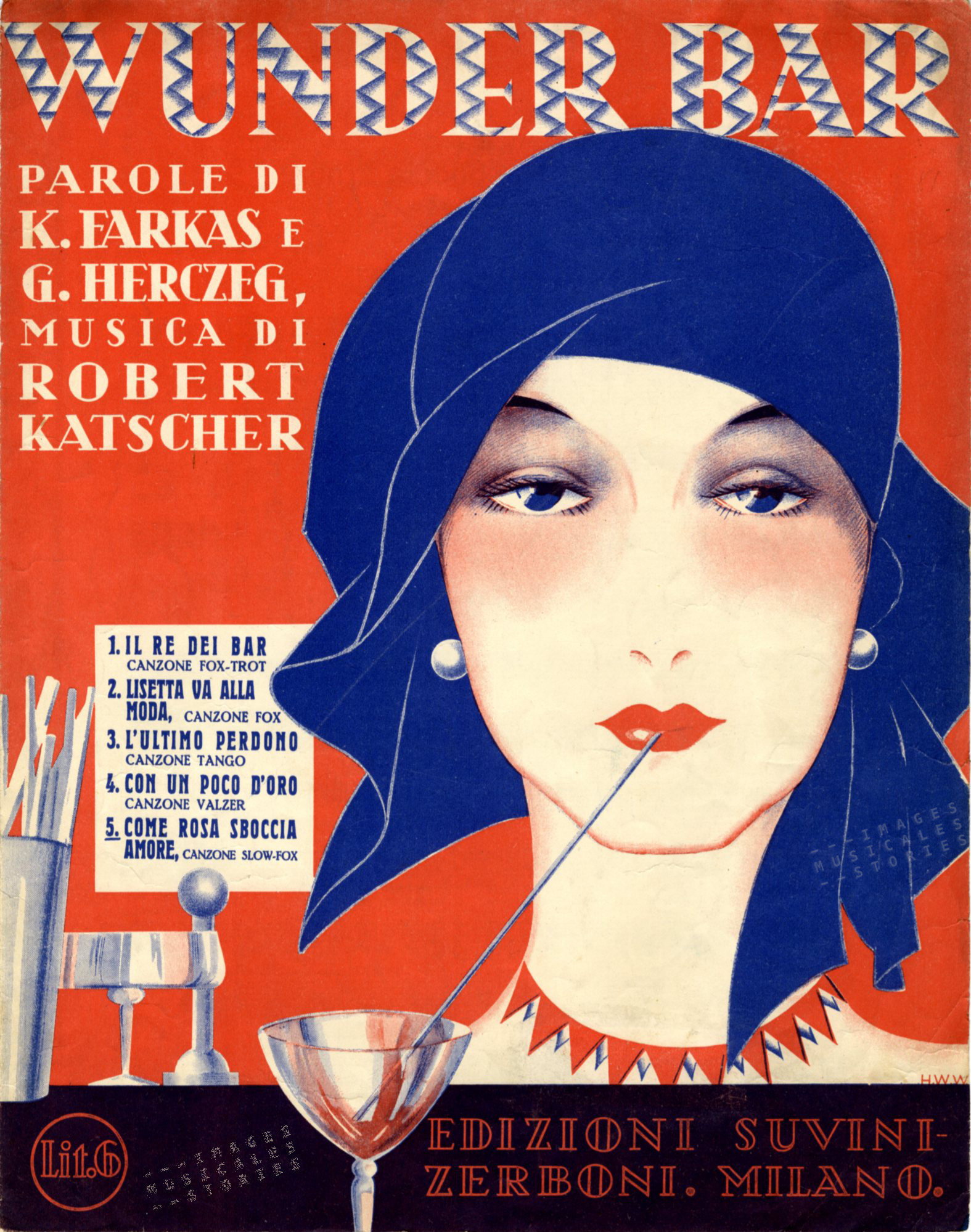
The cover of a cocktail-sipping flapper for the song Wunder Bar is signed HWW. We already had stumbled upon permutations of the letters W, T and/or H, forming a variety of remarkable monograms. But we couldn’t make heads nor tails of these signatures. What a hard life we have!

About a hundred clicks later we came across an obituary telling us more about our illustrator. The information came from the world of stamp collectors. The signatures proved to be those of Hubert Woyty-Wimmer. He was the son of a rittmeister (cavalry officer) and born in Romania (1901), in the Bukovina region which was then part of the Austro-Hungarian Empire. When the empire fell apart at the end of WWI, Woyty-Wimmer moved to Vienna, where he studied graphic design, and became an illustrator and excellent engraver. In 1925 he started his own studio and worked for book publishers and publicity agencies. You can still find his work for sale on eBay, especially post cards and bookplates (ex-libris). Here are a few to illustrate his craftsmanship.
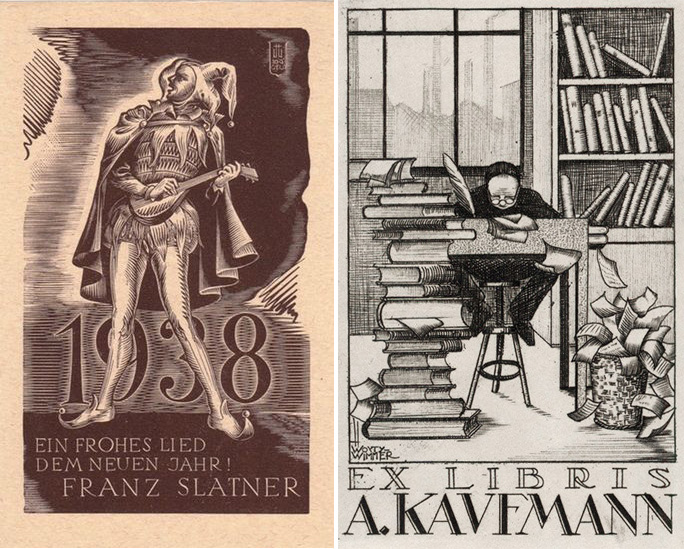
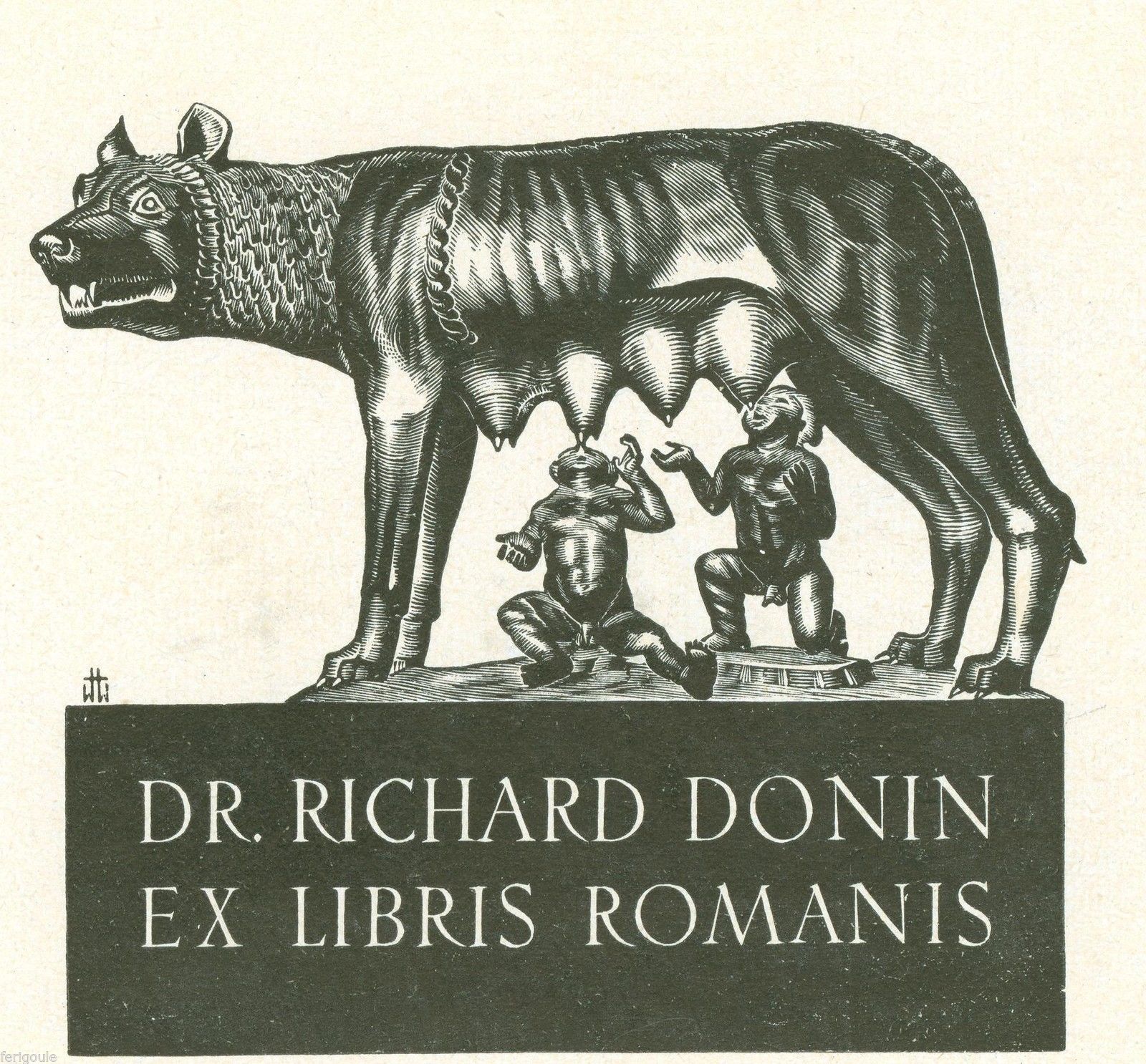
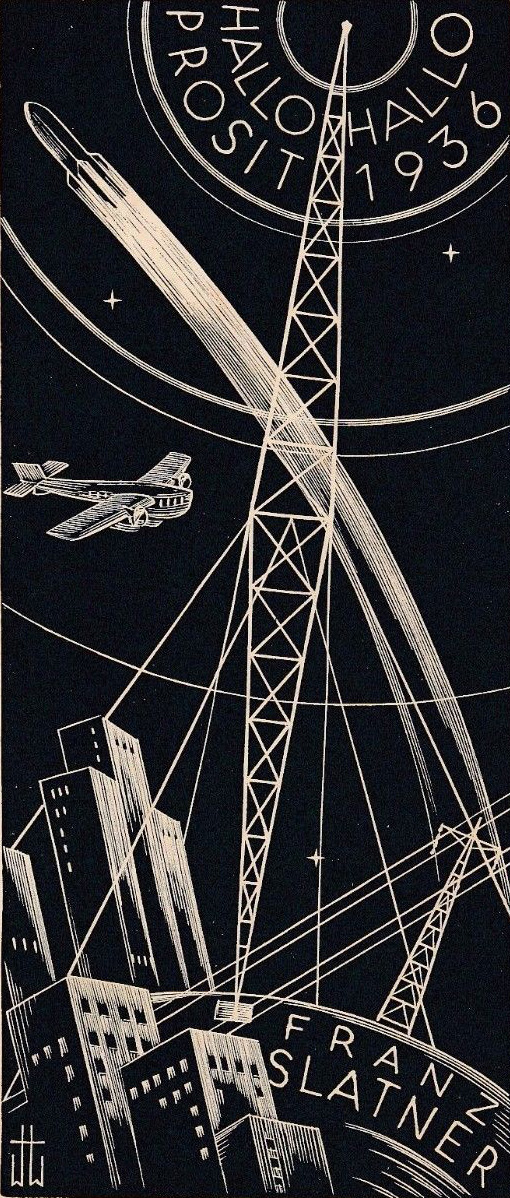
From the Woyty-Wimmer sheet music covers in our collection, we know that his professional path in Vienna during the Thirties must have crossed the grim story of the Jewish publisher Franz Sobotka and his nemesis, the Wiener Lied composer and publisher Heinrich Strecker (read our post ‘Heinrich Strecker vs Franz Sobotka’). Woyty-Wimmer worked for both of them. His designs decorate the sheet music for the publishers Wiener Excelsior Verlag, Edition Bristol and later Strecker’s rather infamous Musikverlag am Schubertring.
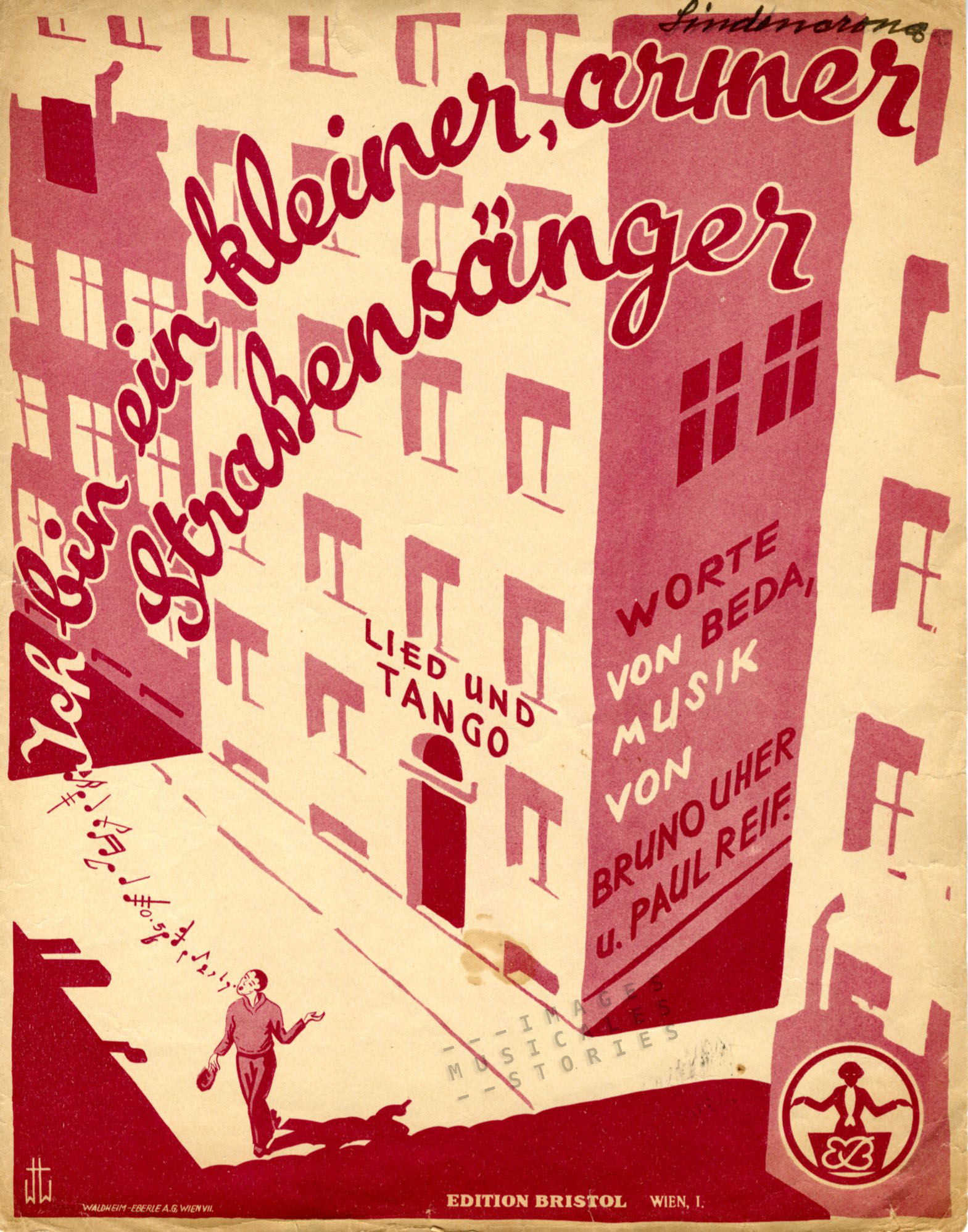
There must also have been a link during that period with the Milanese publisher Suvini-Zerboni (EVZ), but we haven’t found out which. The illustrations are rather sweet though.
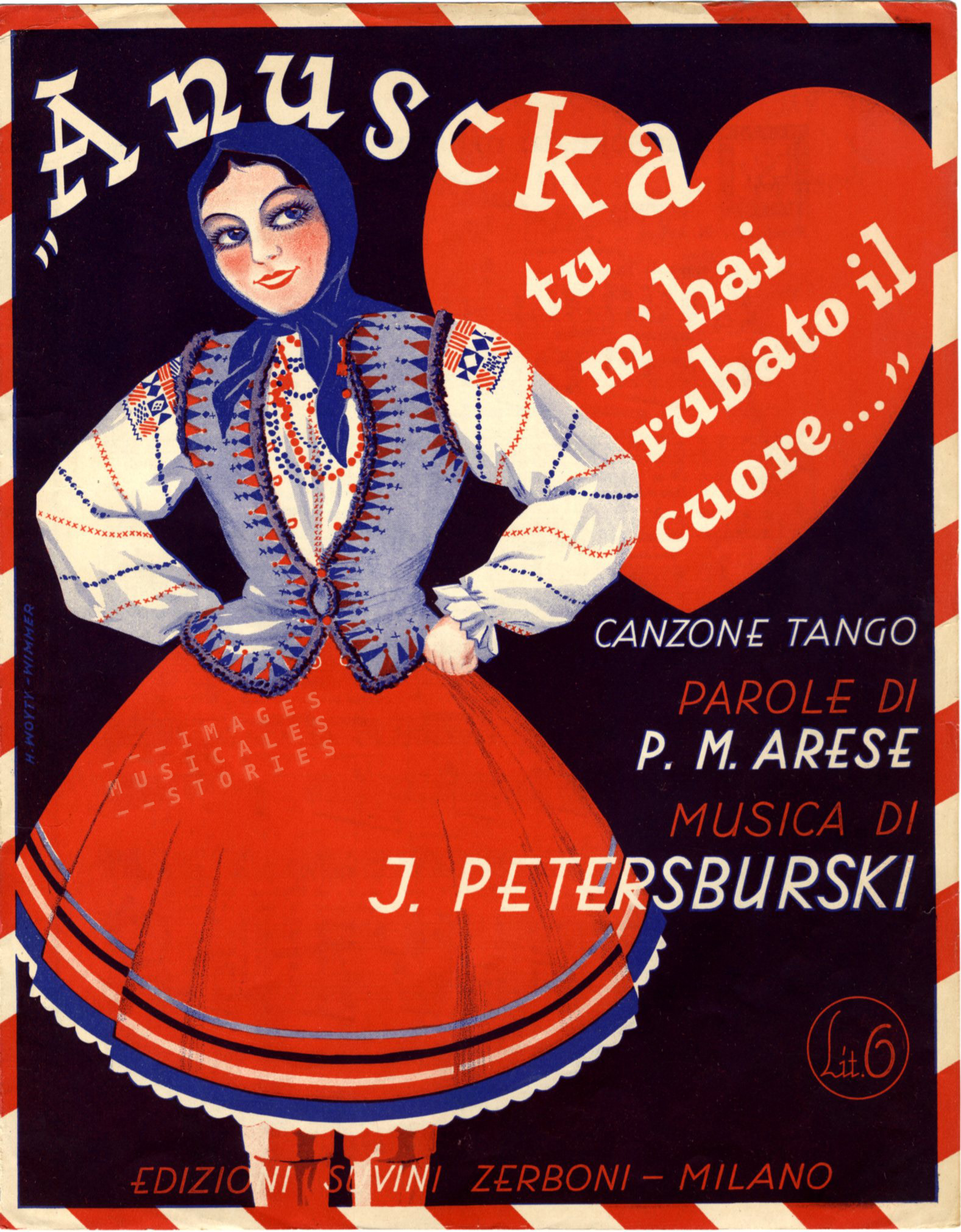
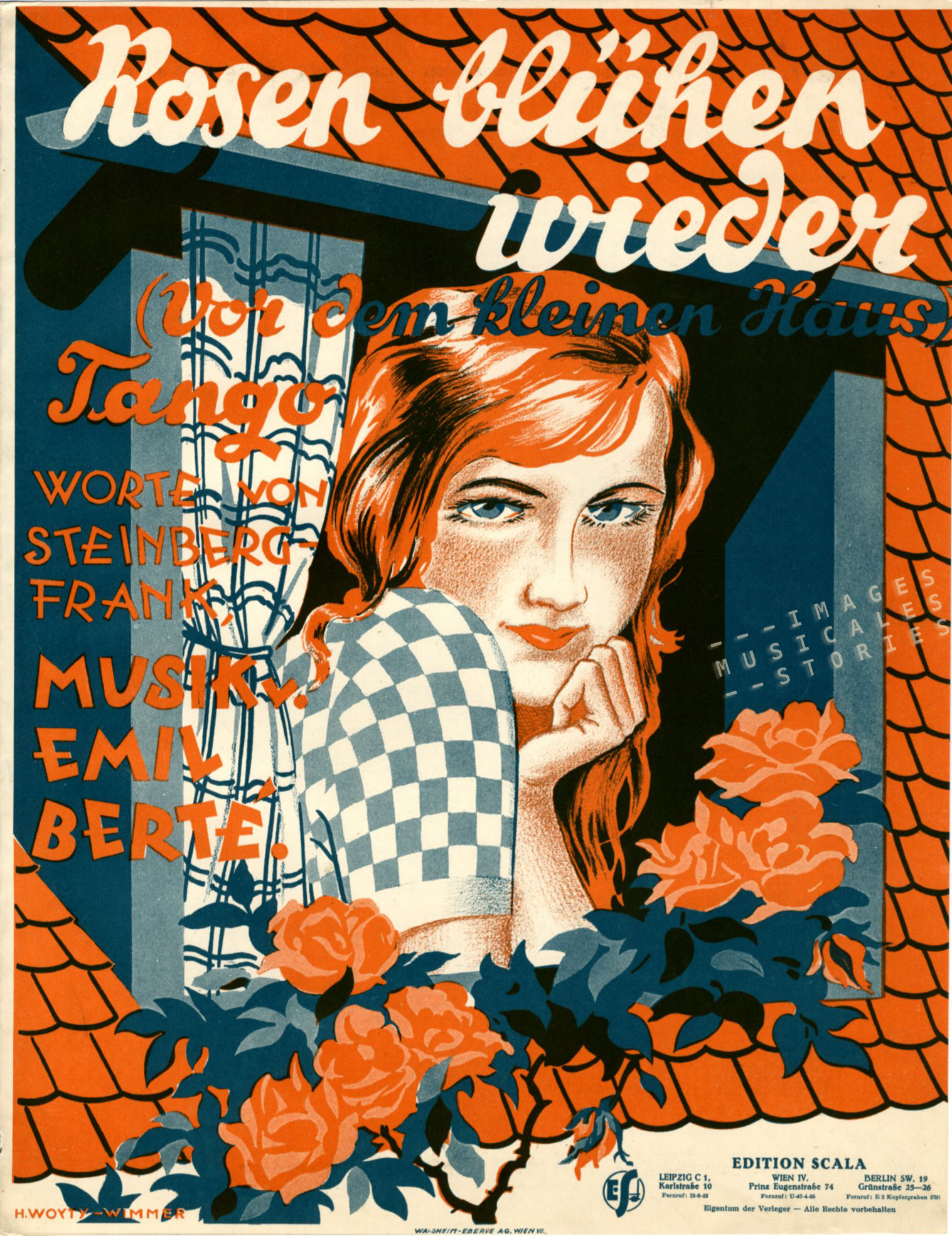
In contrast to the Jewish authors of the Wunder Bar operette (Katscher, Farkas and Herczeg) who all three had to flee Austria after the Anschluss, Hubert Woyty-Wimmer continued to work in Vienna. In 1941 Woyty-Wimmer even became member of the Wiener Künstlerhaus. The Künstlerhaus was one of the two Austrian artists’ associations approved by the National Socialists. A year later Woyty-Wimmer compiled an exhibition for it.
In 1950 Woyty-Wimmer found employment in London as an engraver for a famous security paper manufacturer, working on banknotes and stamps.
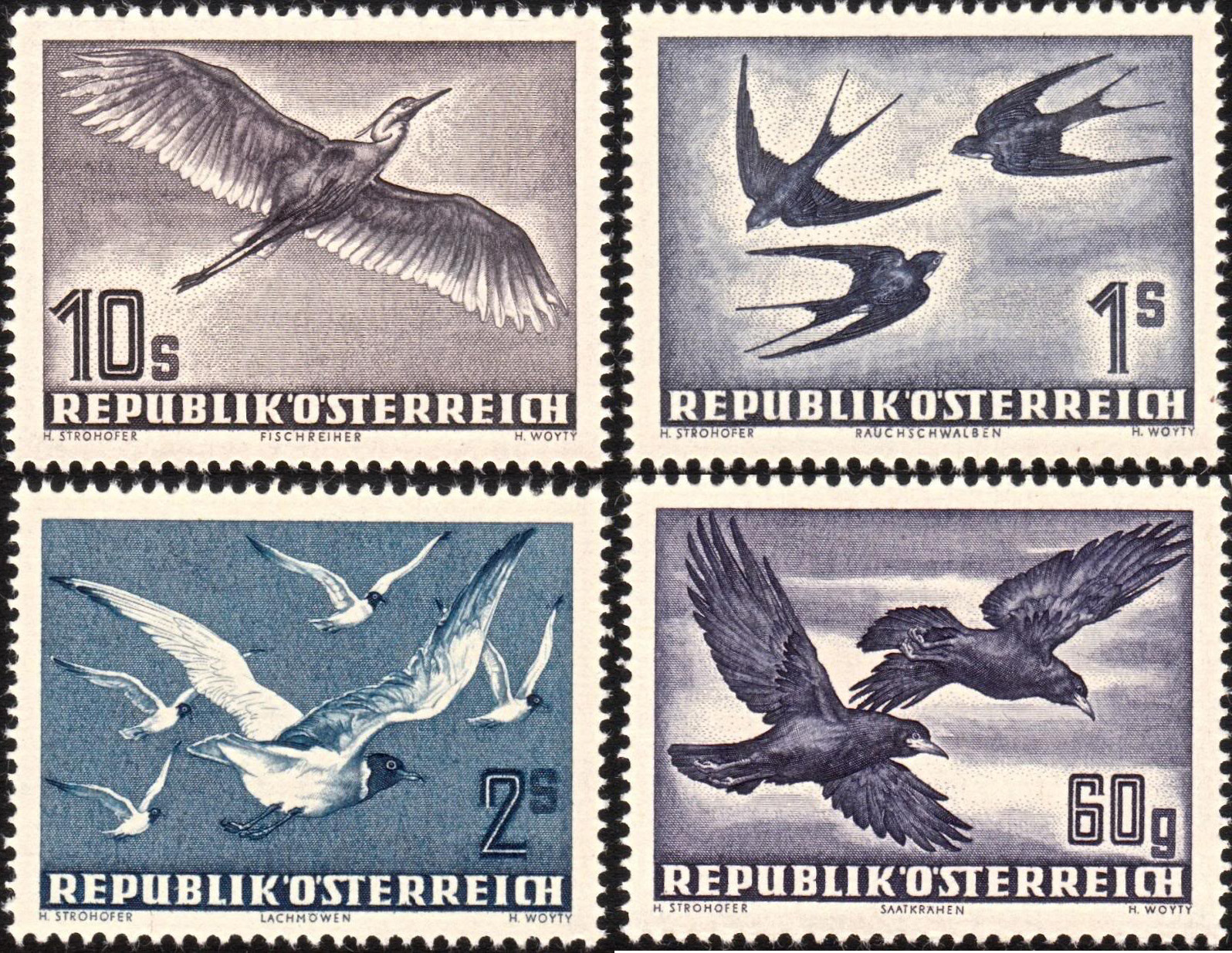
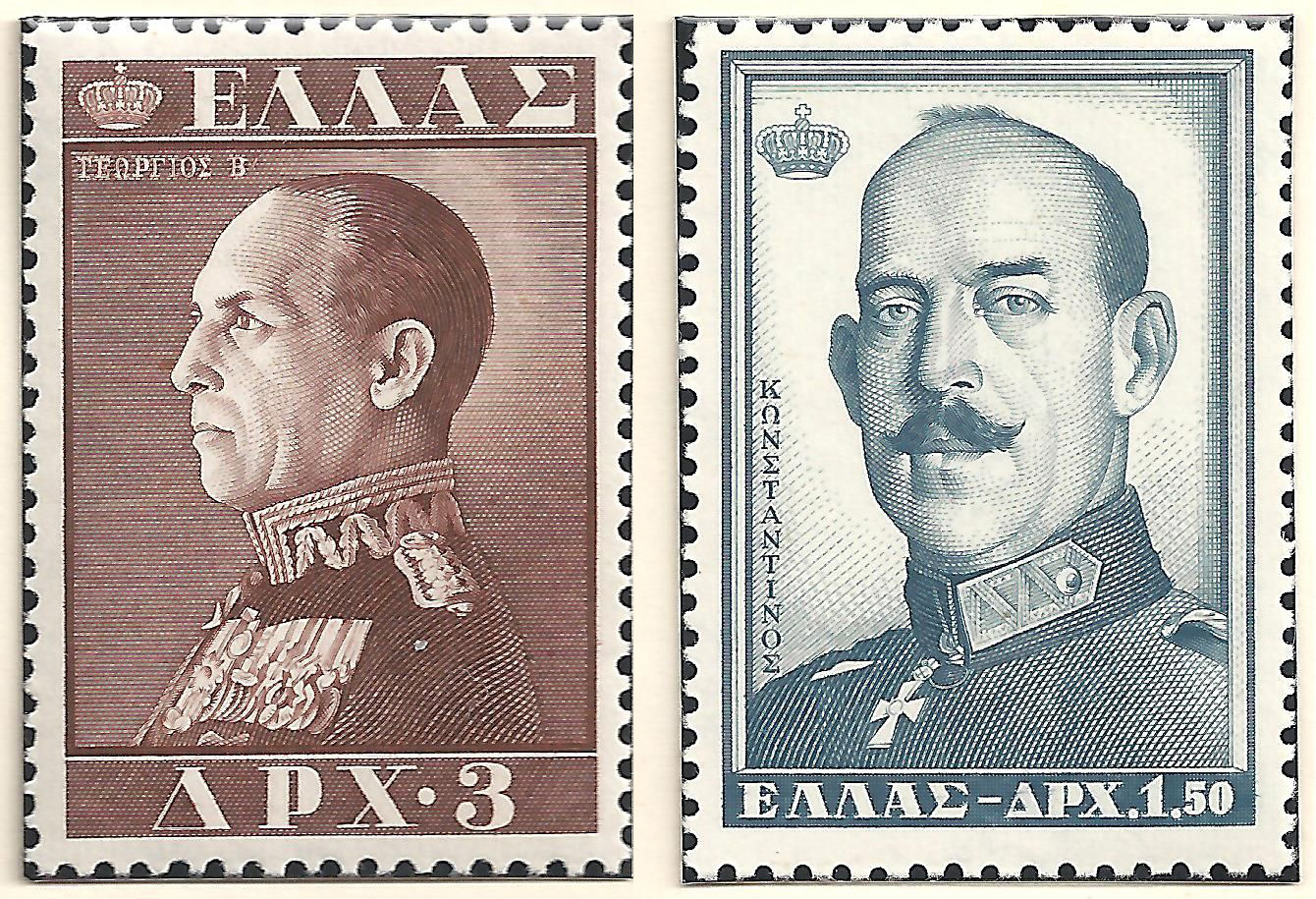
The decorative value of postages stamps was very well known by sheet music designers, especially to put some spirit into a Polka, Walz or Galop.
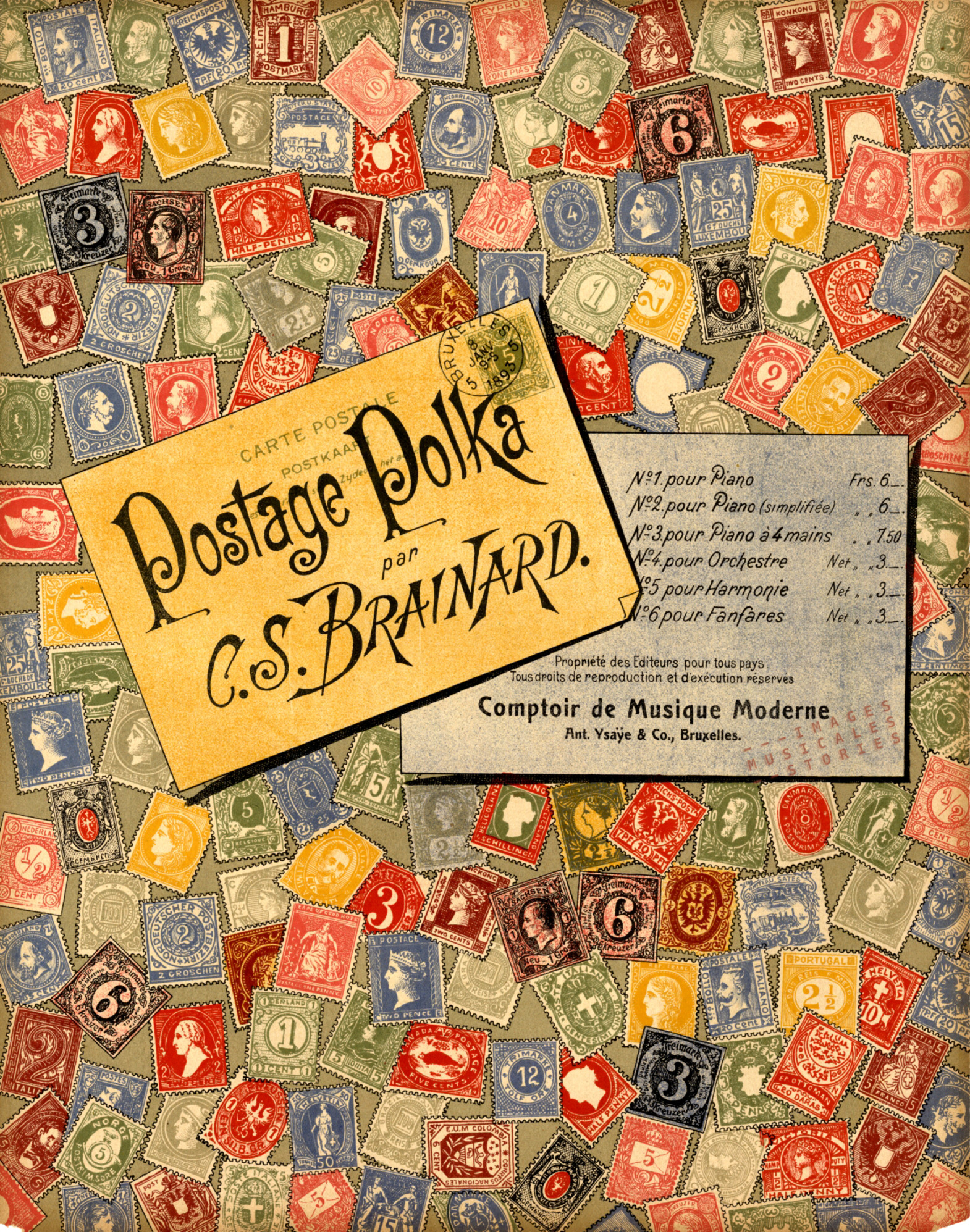
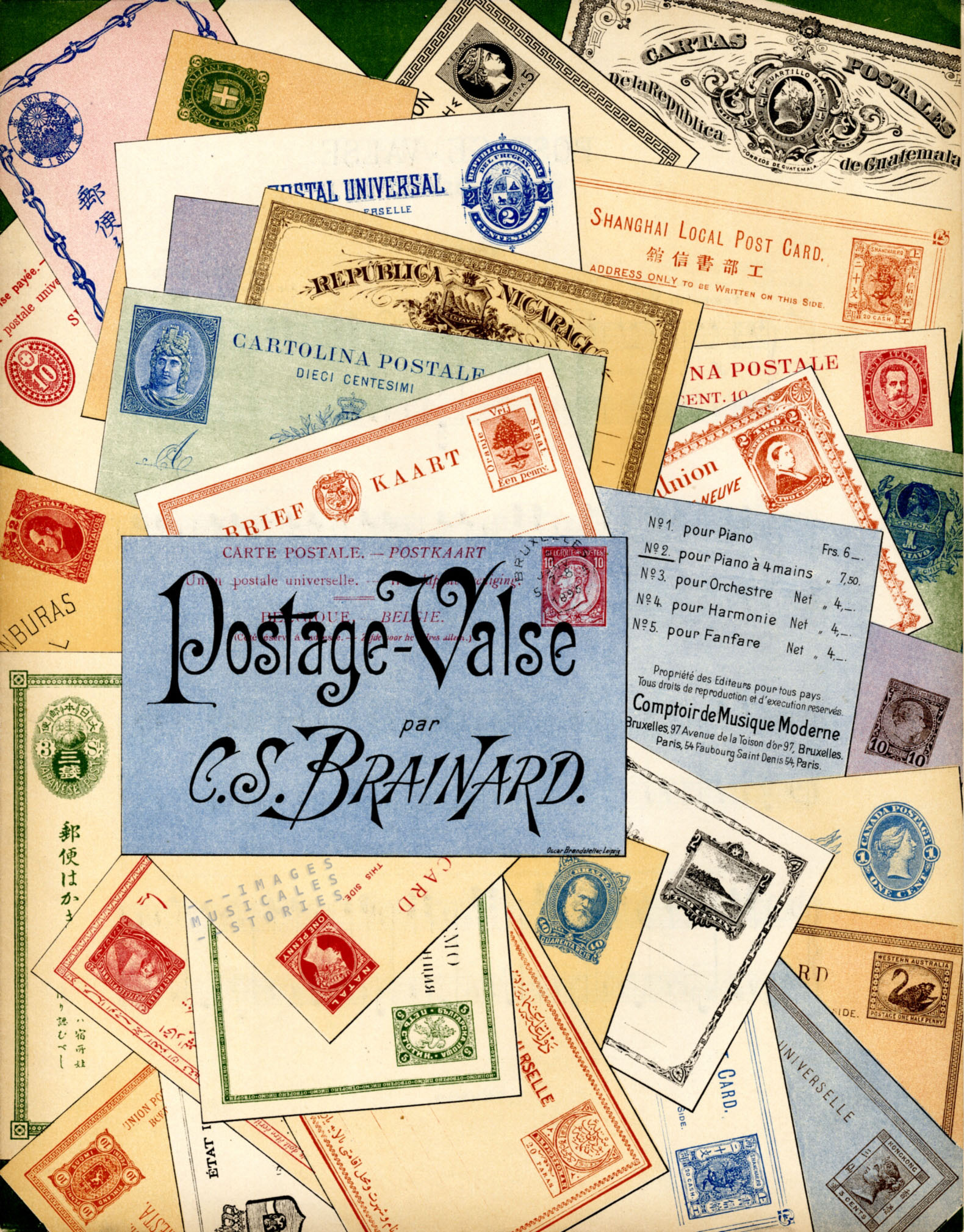
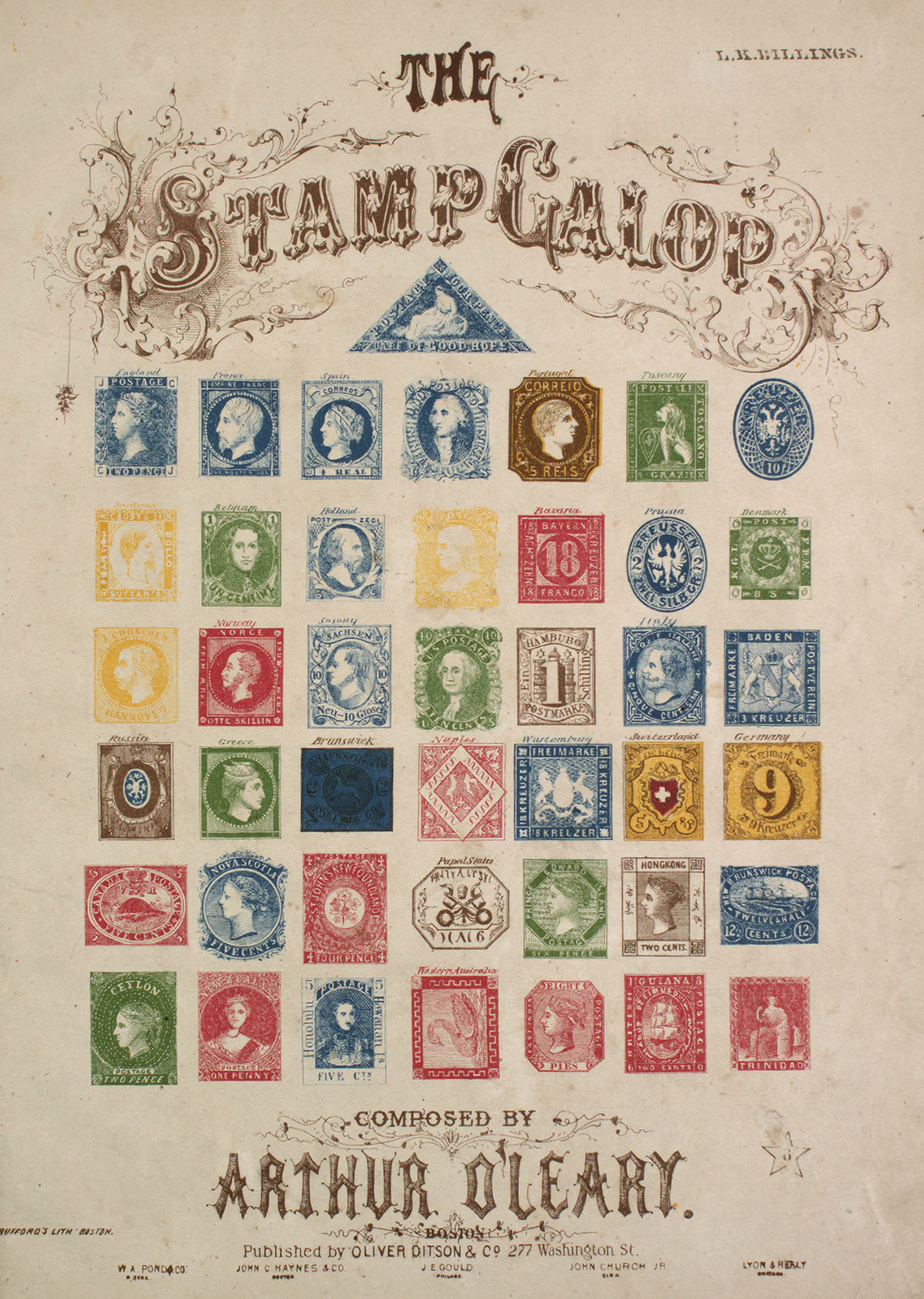
Hubert Woyty-Wimmer returned to Vienna around 1965. His bad health together with harsh family disputes troubled the end of his life. He died in 1972 and was buried in Graz.
Back in 1930, Woyty-Wimmer made another clever Wunder Bar cover, this one for the Viennese publisher Doblinger.
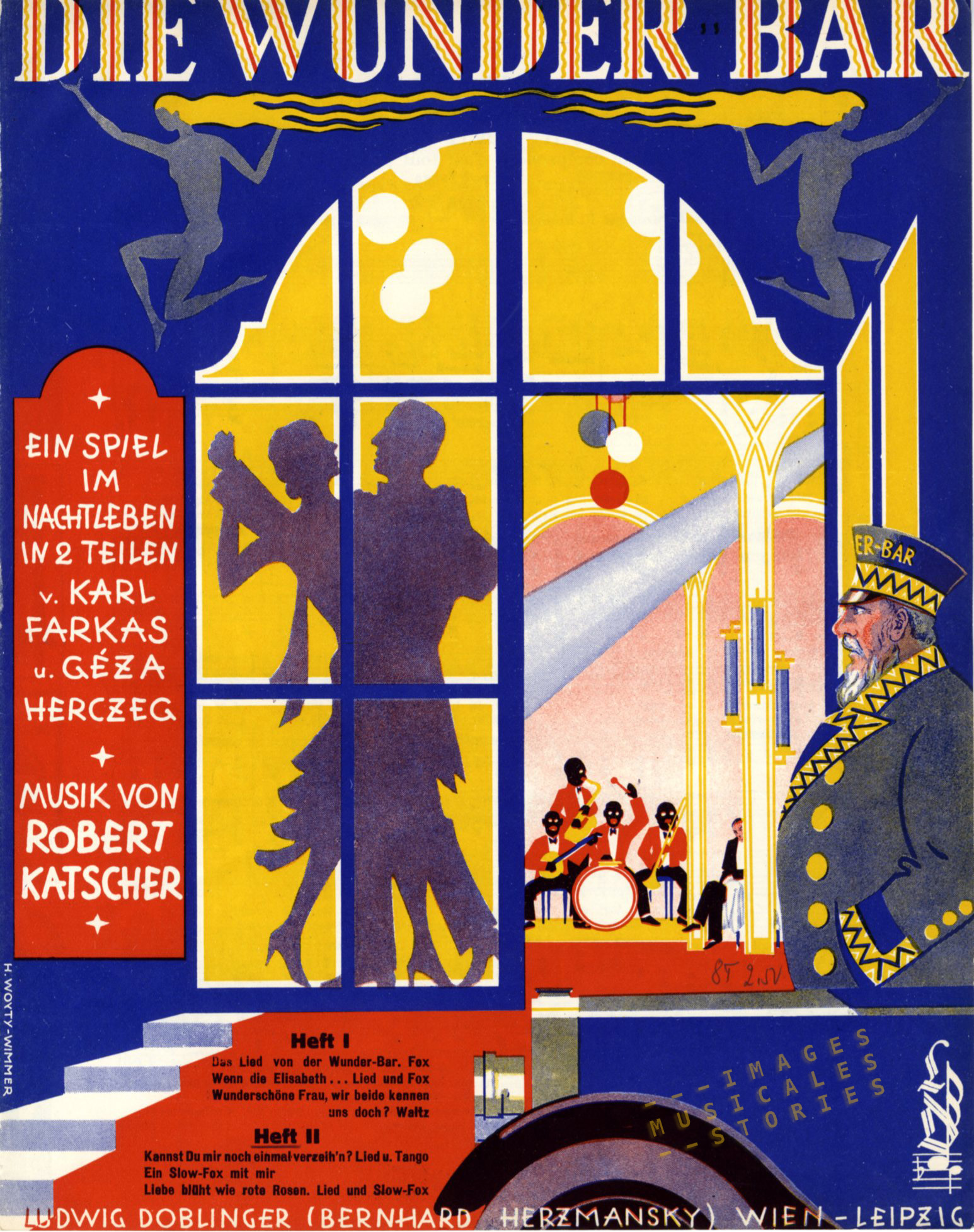
We apologize for the slight chance to have bored you with our philatelic digression. To make good, we offer you a peek at the 1934 Wonder Bar film, based on the operetta, featuring Al Jolson, Kay Francis, Dick Powell, Dolores del Rio and 250 of the world’s most beautiful girls.
Interestingly, Wonder Bar was one of the last pre-Code movies. And so, although the Code office asked Warners to get rid of the gay sequence, they refused and this wunderbarliche scene survived: “Boys will be boys! Woo!”
Edgar Lewy’s 1972 Woyty-Wimmer obituary (source: stamp magazine).

Surtout, n’arrêtez pas : vous me procurez chaque dimanche un
moment de joie et de culture !
Bien amicalement
“Wunderbar”, weer een monogram ontcijferd! Keep on the good work, in spite of the hardships of your hard life!
Thank you, I have always fascinated by his 20 cent United Nations 1951 stamp (Scott catalog #8), though he did others for the UN too. This tells us a lot about him.